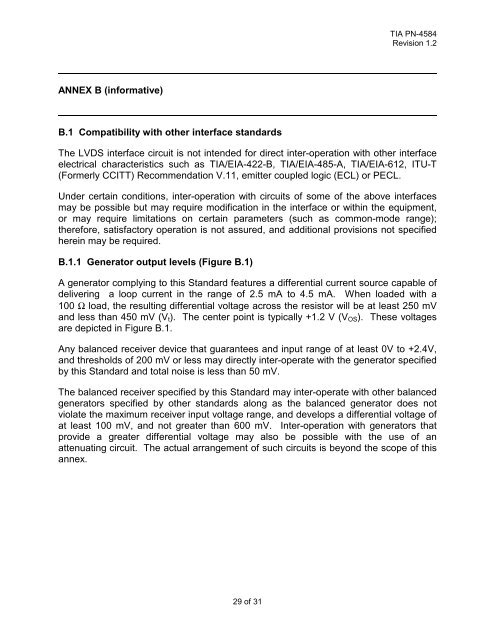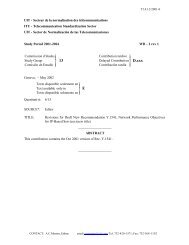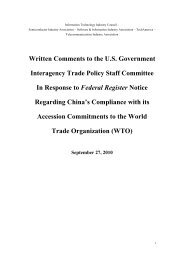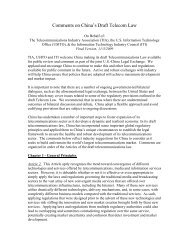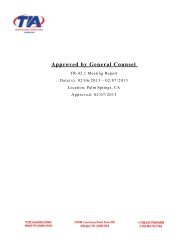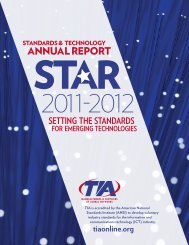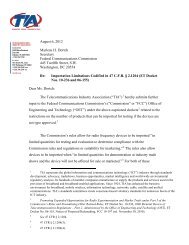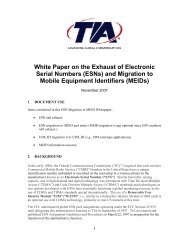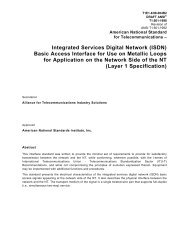ELECTRICAL CHARACTERISTICS OF LOW VOLTAGE ...
ELECTRICAL CHARACTERISTICS OF LOW VOLTAGE ...
ELECTRICAL CHARACTERISTICS OF LOW VOLTAGE ...
Create successful ePaper yourself
Turn your PDF publications into a flip-book with our unique Google optimized e-Paper software.
TIA PN-4584<br />
Revision 1.2<br />
ANNEX B (informative)<br />
B.1 Compatibility with other interface standards<br />
The LVDS interface circuit is not intended for direct inter-operation with other interface<br />
electrical characteristics such as TIA/EIA-422-B, TIA/EIA-485-A, TIA/EIA-612, ITU-T<br />
(Formerly CCITT) Recommendation V.11, emitter coupled logic (ECL) or PECL.<br />
Under certain conditions, inter-operation with circuits of some of the above interfaces<br />
may be possible but may require modification in the interface or within the equipment,<br />
or may require limitations on certain parameters (such as common-mode range);<br />
therefore, satisfactory operation is not assured, and additional provisions not specified<br />
herein may be required.<br />
B.1.1 Generator output levels (Figure B.1)<br />
A generator complying to this Standard features a differential current source capable of<br />
delivering a loop current in the range of 2.5 mA to 4.5 mA. When loaded with a<br />
100 Ω load, the resulting differential voltage across the resistor will be at least 250 mV<br />
and less than 450 mV (V t ). The center point is typically +1.2 V (V OS ). These voltages<br />
are depicted in Figure B.1.<br />
Any balanced receiver device that guarantees and input range of at least 0V to +2.4V,<br />
and thresholds of 200 mV or less may directly inter-operate with the generator specified<br />
by this Standard and total noise is less than 50 mV.<br />
The balanced receiver specified by this Standard may inter-operate with other balanced<br />
generators specified by other standards along as the balanced generator does not<br />
violate the maximum receiver input voltage range, and develops a differential voltage of<br />
at least 100 mV, and not greater than 600 mV. Inter-operation with generators that<br />
provide a greater differential voltage may also be possible with the use of an<br />
attenuating circuit. The actual arrangement of such circuits is beyond the scope of this<br />
annex.<br />
29 of 31


